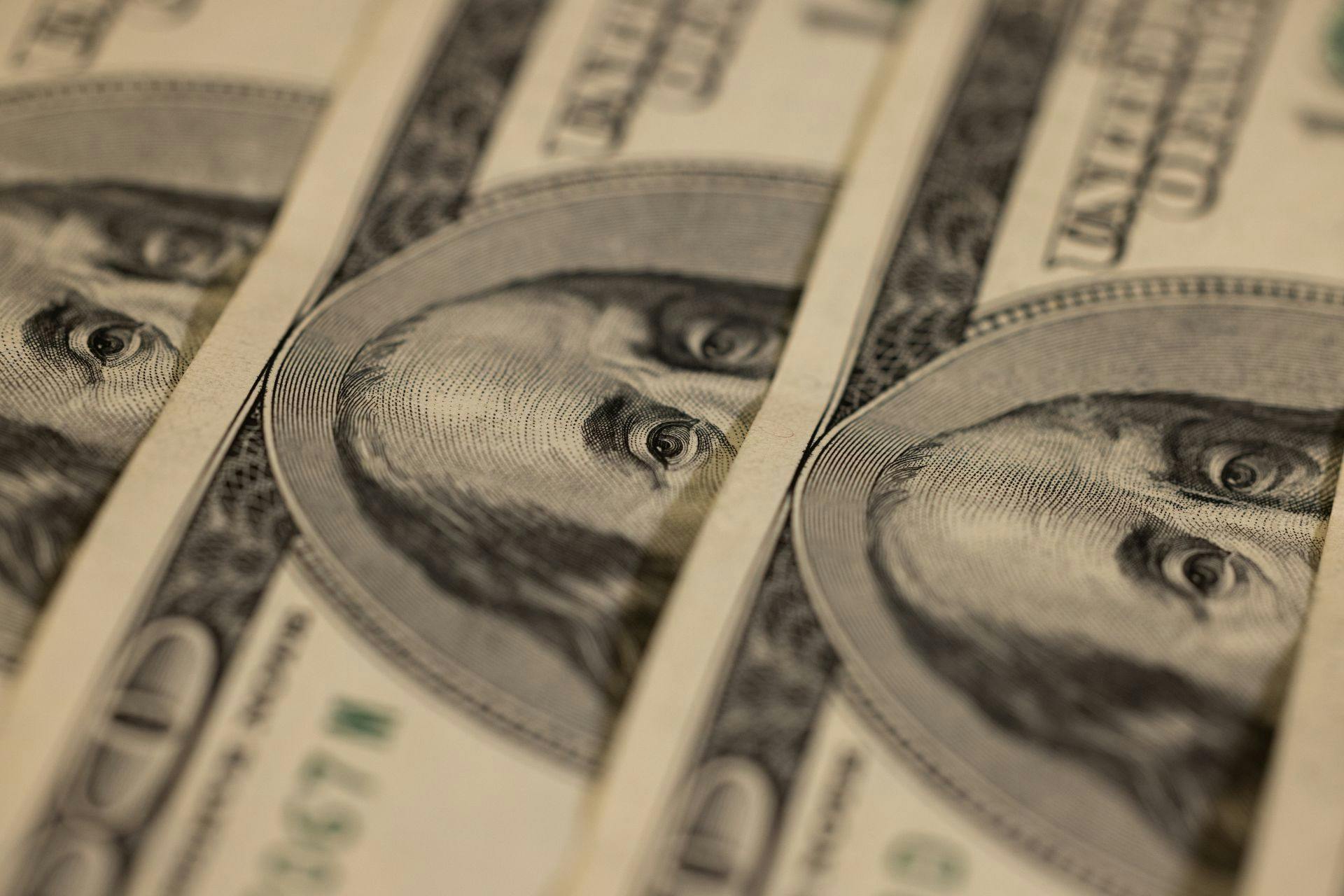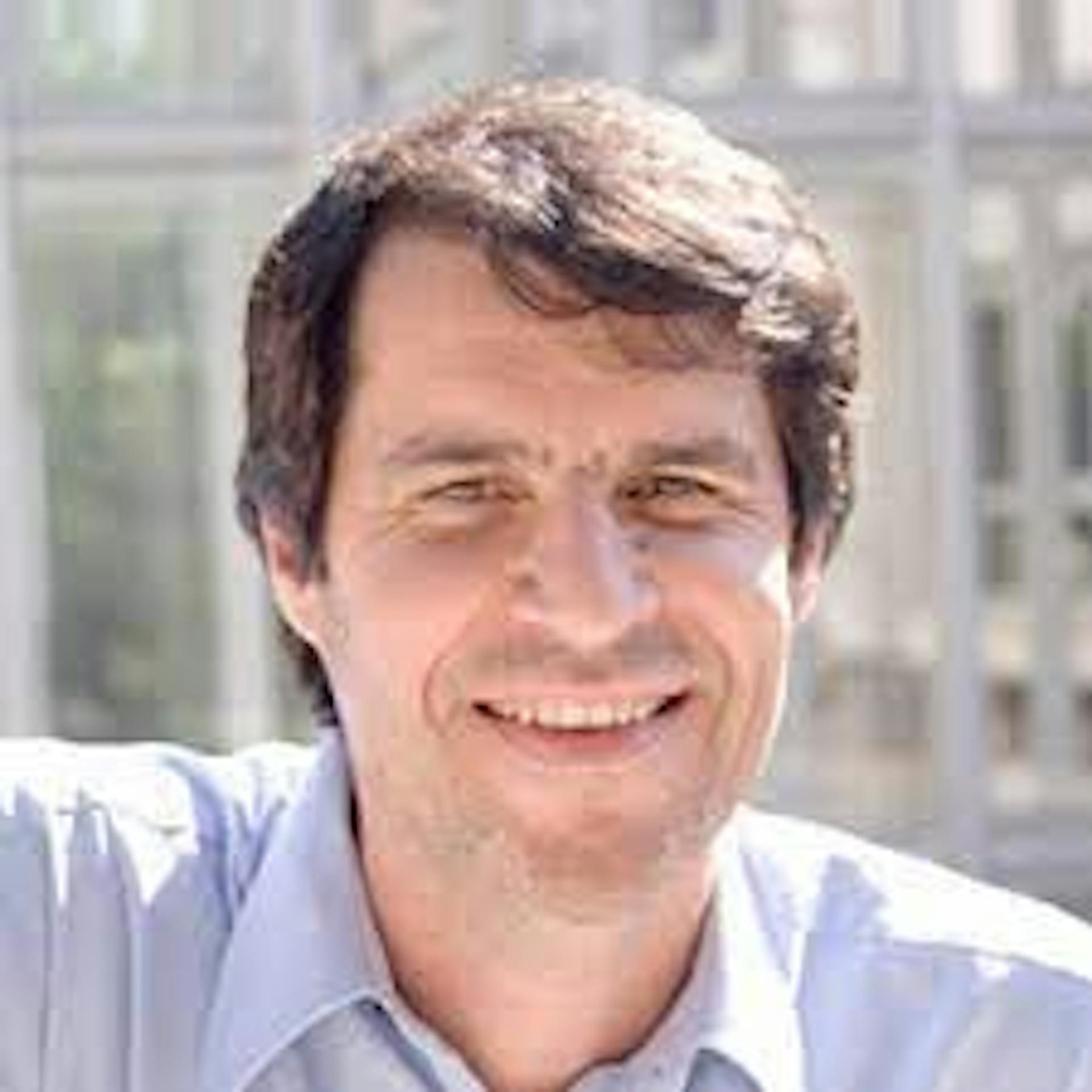
24 juin 2022
Inflation et taux d'intérêt au temps du COVID et de la guerre
Le premier événement de la série AXA-BSE Talk on the Economy, organisé par la Chaire AXA-BSE sur le risque macroéconomique, pour discuter de diverses questions politiques liées au risque macroéconomique avec d'éminents décideurs politiques, chercheurs en économie et chefs d'entreprise.
13 minutes
Original Content: AXA Research Fund
Key Points
- In the first event of the AXA-BSE Talks on the Economy, James Bullard, President and CEO of the Federal Reserve Bank of St. Louis, spoke about steps towards meeting the 2% inflation target, and risks that stem from the Russia-Ukraine war and the pandemic.
- Inflation in the US is far above target, at levels last seen in the 1970s. Continued high inflation risks the Fed’s credibility and could result in unmoored inflation expectations.
- The Fed has taken more assertive action in 2022, including a series of rapid-fire policy rate hikes in efforts to facilitate a soft landing: the most recent 75 basis point move was implemented on June 15. The European Central Bank will also increase policy rates soon, according to Market Chatter.
- Quantitative tightening, passive runoff of the large balance sheet, and forward guidance have also been applied by the Fed.
- A lively discussion with commentators Chiara Osbat, Economics Adviser at the ECB, and Gilles Moëc, AXA Group Chief Economist, and moderator Professor Albert Marcet, AXA-BSE Chair on Macroeconomic Risk followed, covering issues such as rents, the labor market, excess demand, and subsidizing the cost of energy transition
Inflation and Interest Rates in the time of COVID and War
Faced with pandemic-related shortages and soaring shipping costs, central banks around the world grapple with the acceleration in inflation, and brace for further stagnation of supply chains and raised oil and gas prices caused by Russia’s invasion of Ukraine and the COVID lockdowns in China. Price increases are now reaching the highest level in decades across many advanced economies. Navigating this new terrain is a challenge for central banks, who are tasked with finding the best ways to respond to inflation increases.
To cope with the lingering high inflation, the Federal Reserve (Fed) applied a move of 35 basis points on 15 June 2022. As the first Federal Open Market Committee (FOMC) member to speak since this latest development, James Bullard, President and CEO of the Federal Reserve Bank of St. Louis, was guest speaker of the first edition of the AXA-BSE Talks on the Economy, held on 20 June 2022. A panel discussion led by commentators Gilles Moëc, AXA Group Chief Economist, and Chiara Osbat, Economics Adviser at the ECB, was followed by a Q&A session with attendees. The event was organized and moderated by the AXA-BSE Chair on Macroeconomic Risk, Professor Albert Marcet, Catalan Institution for Research and Advanced Studies-Centre de Recerca en Economia Internacional (ICREA-CREI), and sponsored by the AXA Research Fund. Video replay and conference transcript below.
Disclaimer: The testimonials below were edited or shortened for the sake of brevity.
James Bullard: steps towards disinflation
At the end of 2019, the US enjoyed a growing economy at 2.6%, strong labor markets, a below-target inflation rate at 1.5%, and interest rates that were set for that scenario. Then, the pandemic hit, sending financial markets, business, households, and policy makers into confusion. Now, inflation in the US is far above target, at levels last seen in the 1970s and early 1980s
, said Bullard. The 1970s, which saw some of the highest rates of inflation in the US, provides a model that might help us get our bearings amid the chaos.
One surprise of the 1970s was not just the high inflation, but that high inflation bounced up and down between 5% and 10%. This disrupted the price signals, such that businesses and households were unsure what these prices really meant. Should they buy and invest, or not? This era also saw a lot of volatility in the real economy
—the production, purchase, and flow of goods and services—accompanied by many recessions. We don’t want any of that to happen again. That’s why we want to get inflation back to our 2% target as soon as possible
, said Bullard.
The 2% inflation target
The Fed has a statutory mandate to provide stable prices for the US economy, and has adopted the international standard 2% inflation target. This target is stated in terms of the Fed’s preferred measure, Headline
Personal Consumption Expenditures (PCE), according to which the current inflation rate is at 6.3%. This is almost same as the median Headline PCE inflation rate in the 1970s, which was about 6.4%
, said Bullard.
The alternative inflation measures of Core PCE inflation
and Dallas Fed trimmed mean inflation rate
are at 4.9% and 3.8%, respectively. These indices yield lower inflation rates because they exclude some price changes, but, like the Headline PCE, have increased from around 2% in January 2021. So, in macroeconomic terms, these changes in inflation rates have been sudden
, explained Bullard.
Knock-on effects of high inflation
Crucially, high inflation risks the Fed’s credibility with respect to its 2% inflation target and associated mandate to provide stable prices in the US. Unless credible action is taken, we could see a new regime with high inflation, volatile inflation, and volatile real economic performance
, Bullard said. He also described inflation expectations as being on the precipice
of becoming unmoored, as they were in the 1970s.
In economic theory, actual and expected inflation are closely related, which is why economists are so attentive to inflation expectations. There is presently a divergence between actual inflation readings and market-based measures of inflation expectation, but these will inevitably converge at some point. The high inflation readings seen currently could pull expected inflation higher, or, inflation will drop
, said Bullard.
Steps already taken by the Fed
Taking the view that it is better to overdo it
when trying to take better control of inflation risks, the FOMC adopted a more hawkish direction in the second half of 2021. Under the advice of FOMC Chair Jerome Powell, inflation was dealt with more aggressively, and policy started changing quite dramatically in October and November 2021.
As a first action, the FOMC has increased the policy rate level at the last three meetings: 25 basis points in March, 50 basis points in May, and another 75 basis points in June. The Fed is poised to make further increases. Banks all over the world are simultaneously increasing their policy rates—perhaps also the European Central Bank (ECB) very soon, according to Market Chatter
, said Bullard.
Second, the Fed has a very large balance sheet that was added to during the pandemic. In a process known as quantitative tightening (QT), the Fed has stopped purchasing assets and is now allowing passive runoff of the balance sheet. Passive runoff is the decline of income-producing assets when securities are left to mature and are not re-invested. Many other banks worldwide are implementing QT and allowing their balance sheets to shrink
, said Bullard.
Through forward guidance
, a tool that central banks use to influence market expectations via their own forecasts, the Fed is able to move policy more quickly. The forward guidance is already reflected in US market pricing, which should be helping us to stay ahead of inflation
, reported Bullard. This could put downward pressure on inflation, helping us get back to 2%.
Looking ahead
Happily, the US labor markets remain robust and expansion is continuing. Unemployment is low, and the number of job openings relative to unemployed workers is about 2:1. In the macroeconomics world, the late 1990s were kind of a nirvana for US labor markets, and we’re now as good as we were at that time
, Bullard noted.
Good news also for US GDP growth, with real output, total GDP, and total national income that appear to be growing at an above-trend pace, as well as indicators of continued above-trend growth in the quarters ahead. Since the pandemic recession in January to March 2020, we’ve boomed back and US growth has been very strong
, said Bullard. He also noted that while this growth is slowing, it is slowing back to the trend pace of around 2%.
I would be remiss if I didn’t mention that there are risks
, added Bullard. Some of these risks stem from Russia’s invasion of Ukraine, others from the COVID situation in China, and still more from the ongoing supply chain issues worldwide. However, the information we have indicate that there will be continued expansion in the US through 2022
.
Panel discussion
Chiara Osbat (CO): Rents and items affected by supply distributions contribute more to core inflation in the Euro Area (EA) than in the US. In the US, both rents and imputed
rents—which are rental-equivalent
costs for owner-occupied housing—are included in the Consumer Price Index. Imputed rents are not included in the EA’s indexes, yet there is a sense that it should be. Do you think rents have a special behavior?
James Bullard (JB): When the pandemic hit in March/April 2020, the intuition was that housing markets would be terrible. That intuition turned out to be wrong in the US: the pandemic did not slow down the housing market, and the Fed actually bought out mortgage-backed securities, which kept mortgage interest rates particularly low. These low mortgage rates combined with preferences for more housing farther away from city center drove a housing boom during 2020 and 2021—so much so, that measures of total net worth of households relative to disposable income are near all-time highs. The increased housing prices also meant that that rents, which were initially very depressed, are now rising rapidly in the US.
In my understanding, the imputed rents factor wasn’t [NC4] included in the EA Harmonized Index of Consumer Prices because markets are too different across countries, making a proper calculation difficult. They’re now looking to change it in the US direction, but even in the US the calculation has been considered somewhat controversial.
CO: While the EA labor market has accelerated, it is far from the tightness seen in the US, with around half a job for every jobseeker. Moreover, job retention schemes pose problems for interpreting the usual indicators of wage growth, because while fiscal support offered to firms in the EA kept people attached to their jobs, this resulted in reduced working hours and hourly wages. For this reason, I and my colleagues have looked at another measure—negotiated wages. This relatively flat indicator is picking up, especially in 2022, with a sudden increase in new negotiations. Should we be worried that inflation will become more persistent because of wage price spirals? Is the situation now different from the 1970s, when there was no clear monetary policy framework and efficient targeting had yet to be developed?
JB: While wages are very much related to the prices in the economy, I think wage spirals are a symptom of bad monetary policy, not a driver of inflation. If the monetary policy leads to a high inflation economy, then prices—and wages—are going to go up rapidly. This is a macroeconomics lesson that’s been learned since the 1970s.
A success story in macroeconomics is inflation targeting, which came into force in the 1990s. Many countries around the world—all with different shocks and political systems— assigned inflation targets to their central banks. All were able to bring their inflation rates and inflation expectation rates to around 2%, and keep the variance of inflation low. This suggests that if you hold the central bank accountable to hit 2% inflation, you are going to get 2%.
Gilles Moëc (GM): There may be a very specific situation in our economies that make the calibration of monetary policy unusually complex. The amount of excess income created during the pandemic is much higher in the US than in the EA. If this excess demand is allowed to continue, inflation will continue to accelerate. To nip this in the bud before inflation expectations increase too much, the Fed has to move very quickly, at the fastest pace of tightening in the US since the early 1980s. This is a little less obvious for the ECB, perhaps because excess demand is much less certain in the EA. Are there some specific factors in the current situation that make the calibration of monetary policy even harder than usual?
JB: Pandemics don’t occur very often and we certainly don’t have one that we’ve had to respond to in the modern era, so this is a very special situation. The spearhead of the reaction to the pandemic in March and April 2020 was to do as much as possible to protect the economy, such as the big package from congress to try to replace income of disrupted workers in the US. When calibrating that, however, it’s not clear how much is going to be enough, what end date you should have, how long the pandemic will go on for, or when people will be able to go back to work. The spirit of the times was to overdo it, but now we have to mitigate the effects of that.
GM: The average interest rate that investment grade businesses currently pay for debts on the disintermediated market has increased very quickly—the US is already slightly above where we were at the time of the March 2020 turmoil, and it’s actually the highest refinancing rate that we’ve had since the end of the great financial crisis in 2009. Moreover, the problem for Europe is that we are to some extent polluted by what’s going on in the US in terms of market pressure. Concerning the market reaction that we’ve had so far, isn’t there the possibility that the increase in funding conditions is a bit too fast, a bit too strong?
JB: On the whole, the inflation we’re observing is a global phenomenon, and lots of central banks are moving quickly as we come out of the pandemic. So, we’re not the only central bank that has moved the policy rate quickly and in fairly large increments. In fact, many others have tried to anticipate Fed actions and move sooner. I’m hopeful that this concerted action worldwide will help contain the inflation that’s sweeping across the globe. Concerning the magnitude of the interest rate changes, we are indeed moving quickly, but we’re moving from a very low level that was put in place to try to deal with the pandemic.
GM: There’s a structural long-term inflationary factor that could be a problem for us in the years ahead: the cost of the fight against climate change. At present, fiscal policy internalizes the cost of the energy transition. For example, electric cars are much more expensive than dirty cars before tax, so the government can simply tax dirty cars to subsidize clean cars. However, if a lot of people do in fact start buying electric cars, there’s less dirty cars to tax. So at some point you have to choose between running an ever-increasing deficit or allowing inflation—the price of cars—to go up. Hopefully, technological progress will mean the price of a clean solution will fall so quickly that we won’t need to subsidize it, or face a permanent drift in inflation.
There’s a lot of discussion in Europe about greening
the framework of monetary policy. How does the central bank take this on board for the definition of its monetary policy? Is it possible that we will see a permanent inflation drift due to the fight against climate change and the need to speed up our energy transition?
JB: There have been long transitions in other areas of the economy, such as medical care inflation in the US, which is known to have run higher than overall inflation for many years. And, for decades, technology inflation has actually been deflation, probably mostly due to Moore’s Law—we’ve had phenomenal drops in the prices of technological goods. But it’s a good question—how should we think of that as far as managing inflation in the economy?
Albert Marcet (AM): As you noted, central banks have more credibility than they did in the 1970s. Some people emphasize that the ECB’s task is much harder because they need to deal with each different country, yet having 24 different monetary policies for these different countries would generate a lot of uncertainty. The existing setup makes us much better equipped to deal with this crisis. Perhaps you’d like to comment on that.
JB: An interesting idea was raised in some of the older literature: does every disinflation have to have a big recession and be very costly, or can we have disinflations that cost less, or nothing? According to the literature, the basic answer is that if you have a lot of credibility and you make an announcement, then expectations adjust immediately to the new situation and inflation goes away quickly without much in terms of real resource cost. For example, Raymond Poincaré, France’s Finance Minister in 1926, had so much credibility that he just announced what he was going to do and they got results right off the bat without much real cost.
However, if a not-credible government or central bank is trying to get rid of inflation, like Volcker when he started, then every reaction is scrutinized and markets don’t believe anything that’s happening. As did Volcker, those central banks have to work very hard to gain credibility. Modern central banks such as the ECB and the Fed have far more credibility than Volcker had, and so there may be a softer landing for us.
AM: One uncertainty you mentioned is something we’ve never had before—the huge balance sheet of the central banks. Is this really manageable?
James Bullard: Yes, the balance sheet is very large, and we’ve added to it. We have started our passive runoff program, which is about a trillion dollars a year worth of runoff, a good pace to start with. This will contribute to tightening conditions and should help us to get inflation under control.
Audience Q&A session
Q: As policy makers, what have you learned about inflation in the past 15 months—or do we understand less than we thought? This pick-up in inflation has been very fast and to some extent unexpected, despite all the models.
JB: In the first quarter of 2021 when we didn’t have any inflation, all the main theories were actually all pointing in the same direction, despite the fact these normally disagree. Pure monetarists saw that money supply growth was very high in early 2021, so were predicting inflation. Fiscalists saw big budget deficits and also predicted inflation. And Phillips curve-type people were worried about the very tight labor markets and boom economy.
Q: It seems you’re having to engineer two soft landings at the same time: QT and inflation. Do you see some risks that could link the two?
JB: I think unwinding QT is going to help us control inflation. If you consider the runoff in the balance sheet as inflationary, then certainly we’re allowing that to come down. The economy and the amount of reserves needed in the banking system would have grown during this period anyway, so we don’t have to come back down to the pre-pandemic level, but down to where the trend reserves would have been. So I don’t think we have as far to go in QT as it might seem.
Q: Do you think that some mini technological bubbles have been created from this year’s negative interest rates, and could these now burst?
JB: I do think that one side-effect of having very low policy rates, in the US and around the world, is that there seems to be a tendency to search for yield. Asset managers are worried about how to find income for their clients, and so they reach out to other types of investments that might have a more speculative component to them. When interest rates go up sharply, the incentive to do that gets reversed, so we’ll see if that’s what happens this time.

En savoir plus sur la Chaire AXA-BSE en risques macroéconomiques
EN SAVOIR PLUSMots-clés:
Risque financier et économique


